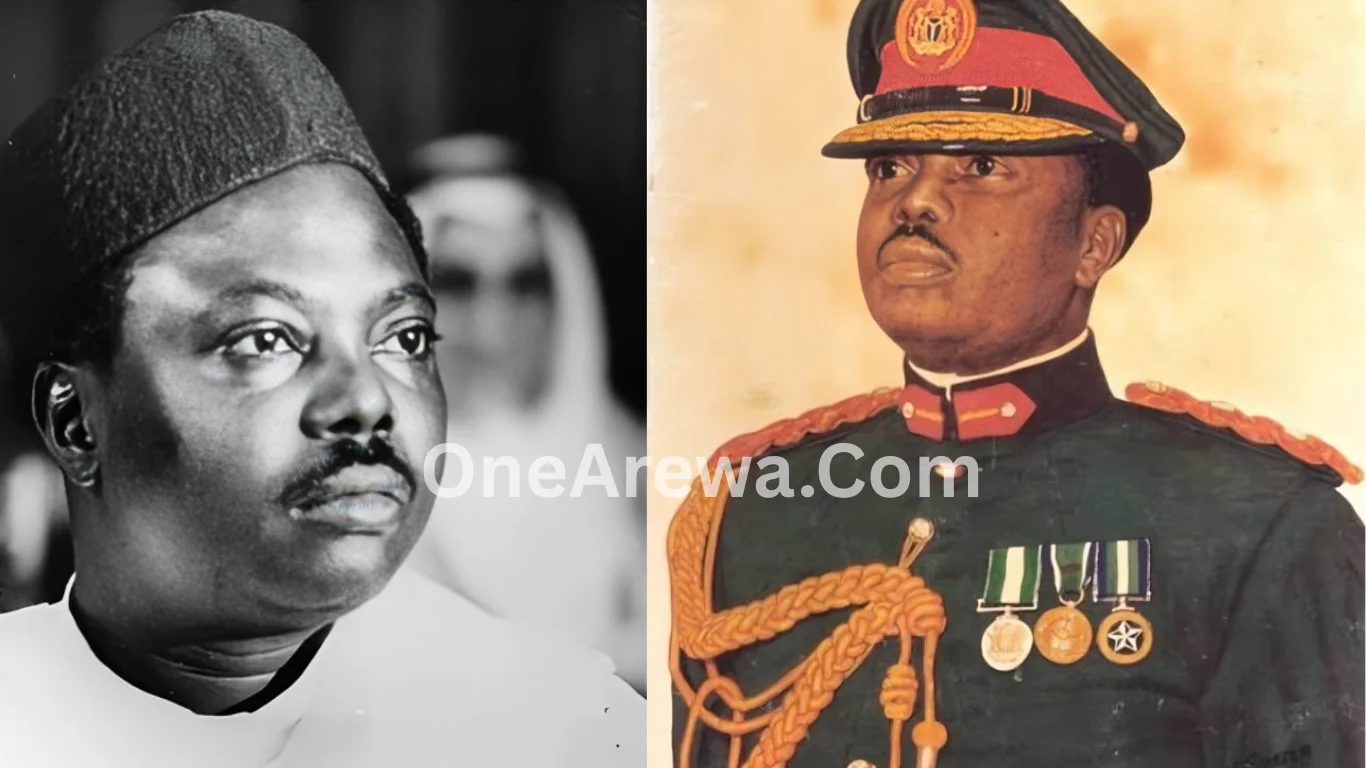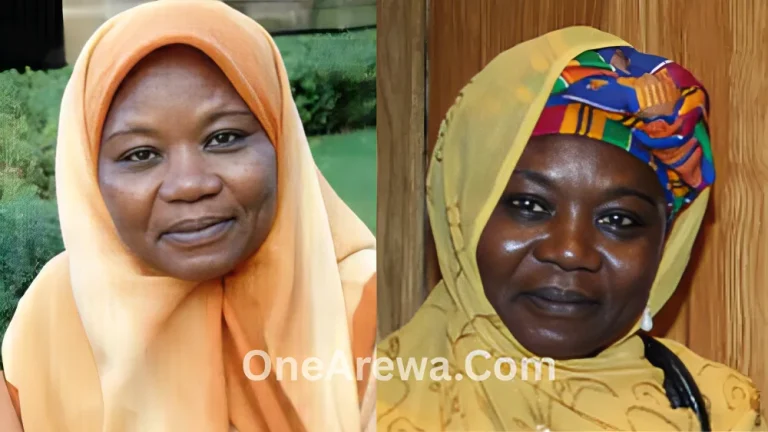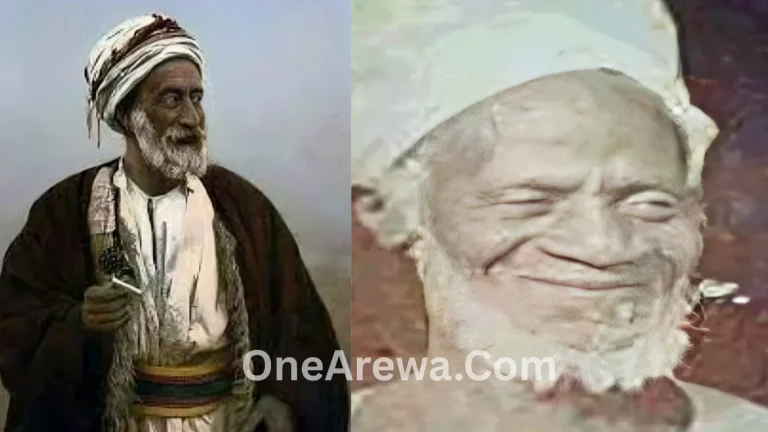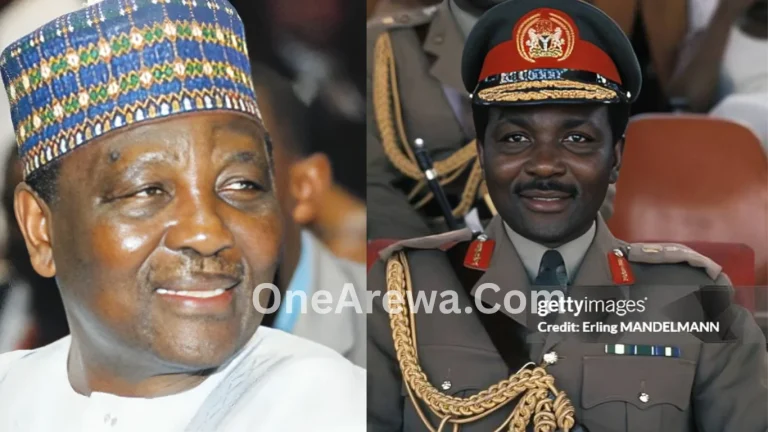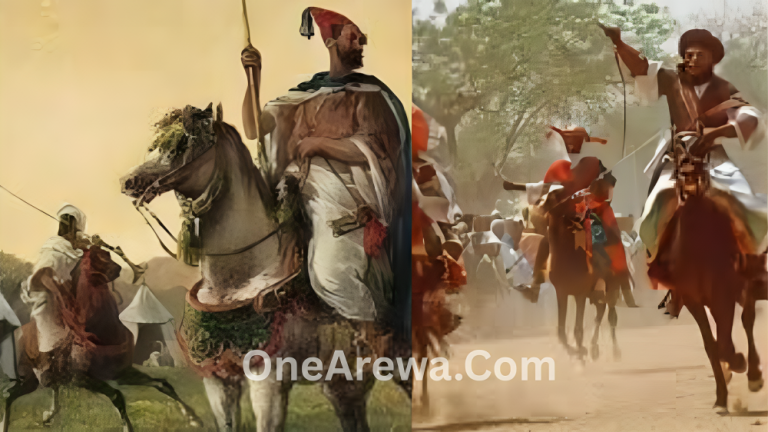General Murtala Ramat Muhammed: Nigeria’s Boldest Head of State (1975–1976)
General Murtala Ramat Muhammed: Nigeria’s Boldest Head of State (1975–1976)
General Murtala Ramat Muhammed GCFR (8 November 1938 – 13 February 1976) was a Nigerian military officer and the fourth Head of State of Nigeria.
He played a key role in the 1966 Nigerian counter-coup on July 29, 1966, which overthrew the military regime of General Johnson Aguiyi-Ironsi.
Murtala became the Head of State in July 1975 after leading a coup that ousted General Yakubu Gowon.
His tenure, from July 29, 1975, to February 13, 1976, was marked by significant reforms and attempts at national development, though his leadership style was authoritarian and criticized for repression.
Born in Kano on 8 November 1938, Murtala was educated in Nigeria and at the Royal Military Academy Sandhurst in the United Kingdom.
He rose quickly in the military, becoming a Brigadier General by 1971 and playing a critical role during the Nigerian Civil War (1967-1970), where he commanded the 2nd Infantry Division.
He was involved in controversial actions, including the massacre of civilians in Asaba in 1967.
After the war, Murtala was appointed Federal Commissioner for Communications in 1974 before taking power in 1975.
His rule was marked by economic growth and infrastructure reforms, although it was also authoritarian, with a heavy military presence. Murtala’s policies were aimed at centralizing government and strengthening pan-Africanism.
Murtala’s tenure came to an end on February 13, 1976, when he was assassinated in a failed coup attempt. His assassination left a controversial legacy, with a lasting impact on Nigeria’s political landscape.

General Murtala Ramat Muhammed Wikipedia
| Category | Details |
|---|---|
| Full Name | Murtala Ramat Mohammed |
| Birth Date | November 8, 1938 |
| Place of Birth | Kano, Nigeria |
| Death Date | February 13, 1976 (aged 37) |
| Place of Death | Lagos, Nigeria |
| Nationality | Nigerian 🇳🇬 |
| Military Rank | General |
| Position Held | Head of State of Nigeria (1975–1976) |
| Time in Office | 200 days |
| Famous For | Fearless reforms, anti-corruption stance, national unity |
| Cause of Death | Assassination during a failed coup by Lt. Col. B.S. Dimka |
| Legacy Projects | Proposed Abuja as the new capital, civil service overhaul |
| Currency Feature | Appears on the ₦20 note |
| Landmark Named After Him | Murtala Muhammed International Airport, Lagos |
| Spouse | Ajoke Muhammed |
| Children | 6 (including Abba “Risqua” Muhammed) |
| Famous Child’s Role | Abba was Adviser to President Obasanjo on Privatisation |
| Nicknames | “The People’s General” |
| Famous Quote | “We are determined to rid this nation of corruption and indiscipline.” |
| Military Medals | FSS, GSM, MSS, NSM, RM |
General Murtala Ramat Muhammed Early Life and Education
Murtala Ramat Muhammed was born on November 8, 1938, in Kano, Nigeria, into a prominent Hausa family.
He received his early education at Rimi College, Kano. After completing his secondary education, Murtala pursued his military training at the Nigerian Military Training College in Zaria, Nigeria.
In 1958, Murtala went to the United Kingdom to attend the prestigious Royal Military Academy Sandhurst for further military training.
His time at Sandhurst played a crucial role in shaping his military career, preparing him for his eventual rise through the ranks of the Nigerian Army.
He returned to Nigeria in the early 1960s and continued to serve in the Nigerian Army, eventually becoming a key figure in the 1966 Nigerian coup and later leading the 1975 coup that brought him into power as Nigeria’s head of state.
His early life and military education were pivotal in his later political and military achievements.
Check Out: General Yakubu Gowon: Nigeria’s Youngest Head of State and Civil War Leader (1966–1975)
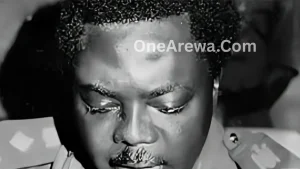
General Murtala Ramat Muhammed Career
Murtala Muhammed enlisted in the Nigerian Army in 1958, undergoing brief training sessions in Nigeria and Ghana before being sent to the Sandhurst Royal Military Academy in England for officer cadet training.
After completing his training, he was commissioned as a second lieutenant in 1961 and assigned to the Nigerian Army Signals.
In 1962, he served as the aide-de-camp to M. A. Majekodunmi, the federal administrator of the Western Region.
In 1963, he became the officer-in-charge of the First Brigade Signal Troop in Kaduna.
Later that year, he attended an advanced telecommunications course at the Royal Corps of Signals in Catterick Garrison, England.
Upon his return to Nigeria in 1964, he was promoted to major and appointed officer commanding the 1st Signal Squadron in Apapa, Lagos.
In November 1965, he was appointed acting Chief of Signals in the Army, a position he held during a time when his paternal uncle, Inuwa Wada, was serving as Defense Minister.
Unbeknownst to Muhammed, some major officers planning the January 1966 coup had recruited troops from the signal unit.
The coup plotters went on to assassinate prominent politicians and soldiers from the Northern and Western regions.
After the coup failed, military postings under the new leadership created unease in the North.
In April 1966, Muhammed was promoted to Lieutenant Colonel and appointed Inspector of Signals at Army Headquarters in Lagos, a move partly aimed at calming Northern officers who were skeptical of the new regime.
Muhammed was also named to a Post and Telecommunications management committee.
He opposed the regime of Major General Johnson Aguiyi-Ironsi, who took power after the coup on January 15, 1966.
Aguiyi-Ironsi worked to restore order by imprisoning the coup plotters and pressuring the federal cabinet to surrender control to him.
However, many Northerners perceived his actions and the perceived leniency toward the coup leaders as supportive of the killings, leading to growing pressure for revenge.
The promulgation of Decree No. 34, which centralized Nigeria’s governance, fueled suspicions among Northern officers, including Muhammed, and led some to contemplate separating the Northern region from the rest of Nigeria.
1966 Counter-Coup:
On the night of July 29, 1966, a mutiny by Northern soldiers at the Abeokuta barracks led to a counter-coup, possibly planned in advance.
Some officers favored secession, and the coup was codenamed “A raba,” meaning secession in Hausa.
After the success of the counter-coup, influential civilians like Chief Justice Adetokunbo Ademola, Sule Katagum, and Musa Daggash persuaded the plotters, including Muhammed, to reconsider secession and remain united.
The counter-coup resulted in the installation of Lieutenant Colonel Yakubu Gowon as Supreme Commander of the Nigerian Armed Forces, despite Muhammed’s initial aspirations for the role.
However, due to Gowon’s seniority and lack of support from British and American advisors, Muhammed ultimately accepted the outcome.
Gowon confirmed Muhammed’s rank and his position as Inspector of Signals.
Despite this, not all military leaders, notably Lieutenant Colonel Odumegwu Ojukwu, military governor of the Eastern Region, supported Gowon’s leadership.
Civil War:
When the Nigerian Civil War began, Muhammed served as the commander of the newly formed 2nd Infantry Division.
The division was tasked with pushing back the Biafran Army from the Mid-West region and crossing the River Niger to link up with the 1st Division advancing from Nsukka and Enugu.
However, several failed river crossings resulted in significant casualties.
During his tenure, Muhammed was implicated in several violations of conduct, including allegations of ordering the execution of Biafran prisoners of war.
In June 1968, Muhammed was reassigned to Lagos as Inspector of Signals and promoted to Colonel in April 1968.
His actions during the war, particularly regarding the mass killings of civilians in Asaba, became controversial.
In 2017, authors S. Elizabeth Bird and Fraser Ottanelli documented these atrocities in a book, which explored the events leading to the massacre and its effects on the war.
Military Service:
Between 1970 and 1971, Muhammed attended the Joint Service Staff College in England, where his supervisor described him as possessing a quick, agile mind and considerable ability but noted that he struggled with moderating his opinions.
In 1971, he was promoted to Brigadier General.
During 1971-1974, he participated in routine activities within the Army’s signals unit, although he disagreed with some of Gowon’s policies.
On August 7, 1974, General Yakubu Gowon appointed Muhammed as the Federal Commissioner for Communications, while also maintaining his military role as Inspector of Signals.
His mandate was to develop an efficient communication infrastructure for Nigeria, especially during the oil boom years.
Following the end of the war and his assumption of power as Head of State, Muhammed initiated the reorganization and demobilization of 100,000 troops, reducing the military from 250,000 to 150,000.
In Government:
On July 29, 1975, while attending the 12th summit of the Organization of African Unity (OAU) in Kampala, Uganda, General Yakubu Gowon was overthrown in a coup d’état.
Muhammed seized power as the new military Head of State. Brigadiers Olusegun Obasanjo and Theophilus Danjuma were appointed Chief of Staff of the Supreme Military Headquarters and Chief of Army Staff, respectively.
Charisma:
During the coup that brought him to power, Muhammed became known for his direct approach to governance, often introducing the phrases “Fellow Nigerians” and “with immediate effect” to the national lexicon.
His decisive leadership gained him broad popular support, and he quickly became a folk hero.
However, his “with immediate effect” style also faced criticism from Nigeria’s top civil servants and intellectuals, as his impromptu presidential proclamations often left the civil service unprepared to implement them.
His administration led to the dismissal of over 10,000 government employees due to reasons such as age, health, incompetence, or malpractice.
National Federalism:
Under Muhammed’s leadership, the federal government took control of Nigeria’s two largest newspapers, Daily Times and New Nigerian.
All media outlets were placed under federal supervision.
On February 3, 1976, Muhammed announced the creation of seven new states, Bauchi, Benue, Borno, Imo, Niger, Ogun, and Ondo, bringing the total number of states to nineteen.
Muhammed also prioritized the construction of a new Federal Capital Territory due to the overcrowding of Lagos.
A panel led by Justice Akinola Aguda selected Abuja as the new capital, and Muhammed announced the move on February 3, 1976, designating the central region as the location for the future capital.
Economic Policy:
As Head of State, Muhammed inherited significant oil and petroleum resources but faced a decline in revenue in 1975 due to reduced oil production.
This caused a shortfall in the funds needed for Nigeria’s development plan.
The drop in petroleum production in 1975 was due to a global fall in demand and high costs of spare parts and labor.
Check Out: Mallam Aminu Kano (1920–1983): Biography, Legacy, Political Influence, and Lessons from His Life
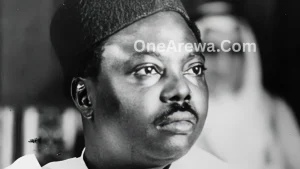
General Murtala Ramat Muhammed Death
On 13th February 1976, General Murtala Ramat Muhammed departed for work as usual along George Street in Lagos.
Shortly after 8:00 a.m., while his black Mercedes-Benz was caught in heavy Lagos traffic near the Federal Secretariat in Ikoyi, a group of armed soldiers suddenly emerged from a nearby petrol station.
These men were part of a failed coup attempt led by Lieutenant Colonel Bukar Suka Dimka.
They ambushed the vehicle and assassinated General Muhammed.
At just 37 years old, General Muhammed was killed on the spot, along with his aide-de-camp, Lieutenant Akintunde Akinsehinwa, and his driver, Sergeant Adamu Michika.
The only form of protection was a sidearm carried by his orderly, which made the attack swift and successful.
The assassination was a key part of an unsuccessful coup orchestrated by Dimka, who was later captured, tried for treason, and executed on 15th May 1976.
General Murtala Ramat Muhammed Legacy
Today, Murtala Muhammed’s image is featured on Nigeria’s 20 Naira note, a symbol of his enduring legacy.
Additionally, Murtala Muhammed International Airport in Lagos bears his name in honor of his service and sacrifice to the nation.
General Murtala Ramat Muhammed Marriage and Family
Murtala Muhammed was married to Ajoke Muhammed, and their union was blessed with six children: Aisha, Zakari (deceased), Fatima, Abba (also known as Risqua), who served as Special Adviser to President Olusegun Obasanjo on privatization, Zeliha, and Jummai.

General Murtala Ramat Muhammed Medals and Honors
General Murtala Ramat Muhammed received several military honors during his lifetime. These include, in alphabetical order: Forces Service Star (FSS), General Service Medal (GSM), Meritorious Service Star (MSS), National Service Medal (NSM), and Republic Medal (RM)
General Murtala Ramat Muhammed Trivia
1. Youngest Nigerian Head of State at the Time: Murtala Muhammed became Nigeria’s Head of State at the age of 36, making him one of the youngest leaders in the country’s history.
2. No Nonsense Reputation: He was famously known for his discipline, firm leadership, and zero tolerance for corruption, earning him the nickname “The People’s General.”
3. Brief But Impactful Rule: Despite ruling for just 200 days, his leadership brought significant reforms, including the restructuring of the civil service and the decision to relocate Nigeria’s capital from Lagos to Abuja.
4. Popular Among the People: He gained widespread support due to his bold policies and commitment to national unity, even though he never ran for office through an election.
5. Military Background: Before becoming Head of State, he played a prominent role during the Nigerian Civil War, commanding troops in key operations for the Federal side.
6. National Holiday: His assassination on February 13, 1976, shocked the nation. Today, memorial events are still held in his honor to commemorate his legacy.
7. Airport and Currency Legacy: Nigeria’s 20 Naira note bears his portrait, and the Murtala Muhammed International Airport in Lagos is named after him.
Check Out: Sir Abubakar Tafawa Balewa: Nigeria’s First Prime Minister (1912-1966)
FAQs
1. Who was General Murtala Ramat Muhammed?
General Murtala Muhammed was a Nigerian military officer and Head of State who ruled from July 1975 until his assassination in February 1976. He is remembered for his bold reforms, integrity, and patriotism.
2. Why is General Murtala Ramat Muhammed considered Nigeria’s boldest Head of State?
Because of his fearless reforms, anti-corruption campaigns, mass purge of the civil service, decisive leadership, and bold moves like initiating the relocation of Nigeria’s capital to Abuja, all within just 200 days in office.
3. How did General Murtala Ramat Muhammed come to power?
He became Head of State after leading the bloodless coup that overthrew General Yakubu Gowon on July 29, 1975.
4. What was General Murtala Ramat Muhammed’s most notable reform?
His civil service overhaul aimed at increasing efficiency and eliminating redundancy. Over 10,000 public officials were dismissed for corruption or incompetence.
5. What major decision did General Murtala Ramat Muhammed make about Nigeria’s capital city?
He initiated the move of the capital from Lagos to Abuja to create a more neutral, central location for national unity.
6. How and when was General Murtala Ramat Muhammed assassinated?
He was assassinated on February 13, 1976, during a failed coup led by Lt. Col. Bukar Suka Dimka, while stuck in traffic on his way to work in Lagos.
7. What made General Murtala Ramat Muhammed’s assassination so shocking?
Despite being Head of State, he had minimal security, traveling in an unarmored black Mercedes-Benz, with only his orderly carrying a pistol, showing his confidence and humility.
8. What is General Murtala Ramat Muhammed’s most enduring legacy in Nigerian currency?
His portrait is featured on the ₦20 note, symbolizing his popularity and national respect.
9. What national institution is named after General Murtala Ramat Muhammed?
The Murtala Muhammed International Airport in Lagos, one of the busiest airports in West Africa.
10. Who was General Murtala Ramat Muhammed’s wife, and how many children did they have?
He was married to Ajoke Muhammed, and they had six children, including Abba (Risqua) Muhammed, a former presidential adviser.
11. What medals did General Murtala Ramat Muhammed receive during his military career?
He was decorated with the Forces Service Star (FSS), General Service Medal (GSM), Meritorious Service Star (MSS), National Service Medal (NSM), and the Republic Medal (RM).
In Conclusion
General Murtala Ramat Mohammed remains one of Nigeria’s most bold, principled, and visionary leaders, despite his short time in office.
In just 200 days, he redefined leadership by prioritizing national unity, anti-corruption, civil service reform, and African liberation.
His tragic assassination only amplified the greatness of his legacy, as he became a symbol of patriotism, courage, and sacrifice.
From the ₦20 note to the Murtala Muhammed International Airport, his name continues to inspire generations of Nigerians.
His fearless actions, simple lifestyle, and commitment to public service have carved his name in gold in the pages of Nigerian history.
Murtala lived briefly but led boldly — a true hero of the Nigerian nation.
Check Out: Abubakar Imam (1911–1981): Northern Nigeria’s Pioneer Intellectual and Political Icon
